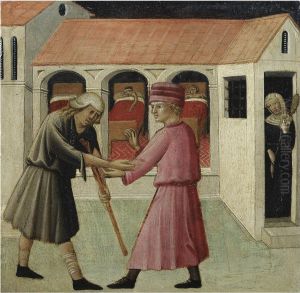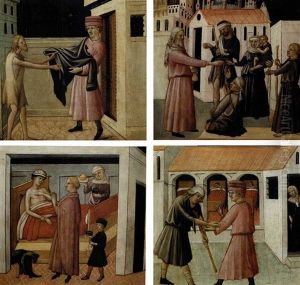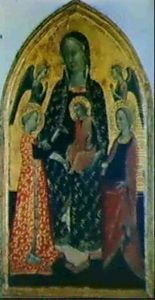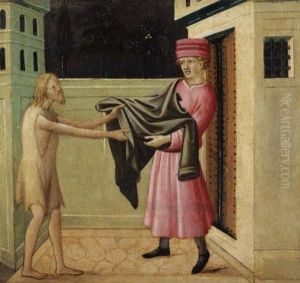Mariotto Di Cristofano Paintings
Mariotto di Cristofano, also known as Mariotto di Nardo, was an Italian painter active during the early Renaissance period. Born in 1393 in Florence, Italy, he was part of the vibrant Florentine art scene, though not as renowned as his contemporaries such as Masaccio, Fra Angelico, or Filippo Lippi. Mariotto’s artistic career unfolded within the context of a society that was experiencing profound cultural, political, and economic changes, which were reflected in the evolving styles and themes of the art produced during this time.
Mariotto's work is characterized by the use of gothic elements, a trait typical of the transition period in which he lived, where the International Gothic style was giving way to the innovation brought by the early Renaissance. His paintings often featured religious subjects, a common theme for the era, with a particular devotion to the detailed rendering of figures and the use of vivid colors. He was influenced by the likes of Lorenzo Monaco and Agnolo Gaddi, who were prominent figures of the late Gothic style.
The documentation about Mariotto's life and work is sparse, but records show that he was active as a painter from 1418 until his death in 1457. During his career, he produced altarpieces, frescoes, and panel paintings for various churches and patrons in Florence and its surroundings. Notable works attributed to Mariotto include a 'Madonna and Child Enthroned' and a 'Crucifixion' scene. His works are preserved in institutions such as the Accademia Gallery in Florence and the National Gallery of Art in Washington, D.C.
Mariotto's contributions to art are often overshadowed by those of his more famous contemporaries. Nevertheless, his paintings are valuable for understanding the stylistic transitions and the cultural atmosphere in Florence during the early 15th century. Mariotto di Cristofano's death in 1457 marked the end of a career that had spanned nearly four decades, during which he witnessed and participated in the early developments of the Renaissance, an era that would eventually revolutionize Western art.



